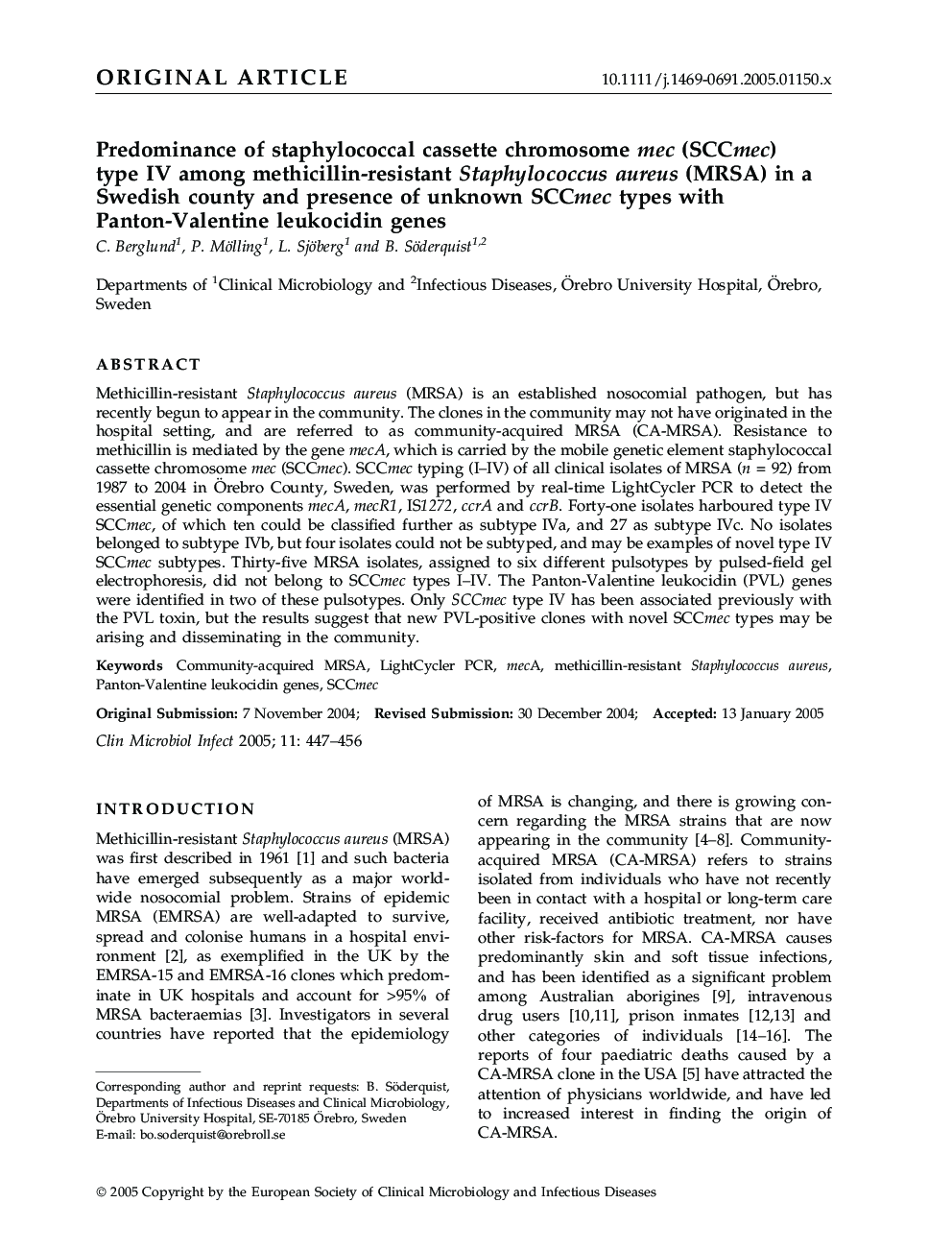| Article ID | Journal | Published Year | Pages | File Type |
|---|---|---|---|---|
| 9276051 | Clinical Microbiology and Infection | 2005 | 10 Pages |
Abstract
Methicillin-resistant Staphylococcus aureus (MRSA) is an established nosocomial pathogen, but has recently begun to appear in the community. The clones in the community may not have originated in the hospital setting, and are referred to as community-acquired MRSA (CA-MRSA). Resistance to methicillin is mediated by the gene mecA, which is carried by the mobile genetic element staphylococcal cassette chromosome mec (SCCmec). SCCmec typing (I-IV) of all clinical isolates of MRSA (n = 92) from 1987 to 2004 in Ãrebro County, Sweden, was performed by real-time LightCycler PCR to detect the essential genetic components mecA, mecR1, IS1272, ccrA and ccrB. Forty-one isolates harboured type IV SCCmec, of which ten could be classified further as subtype IVa, and 27 as subtype IVc. No isolates belonged to subtype IVb, but four isolates could not be subtyped, and may be examples of novel type IV SCCmec subtypes. Thirty-five MRSA isolates, assigned to six different pulsotypes by pulsed-field gel electrophoresis, did not belong to SCCmec types I-IV. The Panton-Valentine leukocidin (PVL) genes were identified in two of these pulsotypes. Only SCCmec type IV has been associated previously with the PVL toxin, but the results suggest that new PVL-positive clones with novel SCCmec types may be arising and disseminating in the community.
Related Topics
Life Sciences
Immunology and Microbiology
Microbiology
Authors
C. Berglund, P. Mölling, L. Sjöberg, B. Söderquist,
